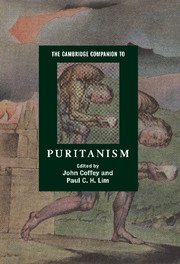1 - Antipuritanism
from Part I: - English Puritanism
Published online by Cambridge University Press: 28 November 2008
Summary
Antipuritanism was antecedent to Puritanism, and so merits prior consideration. 'Puritans' were so identified by Antipuritans, out of an intense dislike of all that those people stood for, and it was some considerable time before this stereotypical, antithetical stigma hardened into something almost tangible, a word which instantly evoked a widely shared set of assumptions and prejudices; longer still before it was acknowledged and accepted as an honourable badge by those to whom it was attached. In the first instance, 'Puritans' were Puritans in the eye of the beholder and it is with the beholder that we should begin. This is, of course, a very common if not universal phenomenon. In the mid seventeenth century 'Independent' was in origin a hostile construction deployed by those who came to be known as 'Presbyterians'. The stigma 'Puritan' was at first a piece of Antiprotestantism, in that it may have originated with exiled Catholic polemicists who found this reference to ancient perfectionist heresies a convenient tar with which to brush the Elizabethan Protestant establishment. According to more than one source, the first Catholic controversialist to use the word was Nicholas Sander. Thomas Stapleton, in a book printed in Antwerp in June 1565, refers, almost incidentally, to 'the Puritans off our countre'. John Martial, in a polemic about reverence for the cross (June 1566), has 'whote [hot] Puritanes of the new clergie' and 'a plaine, puritaine, and notorious protestant'. But these home thoughts from abroad were perhaps already indebted to the domestic and internecine quarrels between nonconformist and conformist elements in the Elizabethan church which had begun in 1565.
- Type
- Chapter
- Information
- The Cambridge Companion to Puritanism , pp. 19 - 33Publisher: Cambridge University PressPrint publication year: 2008
- 7
- Cited by



